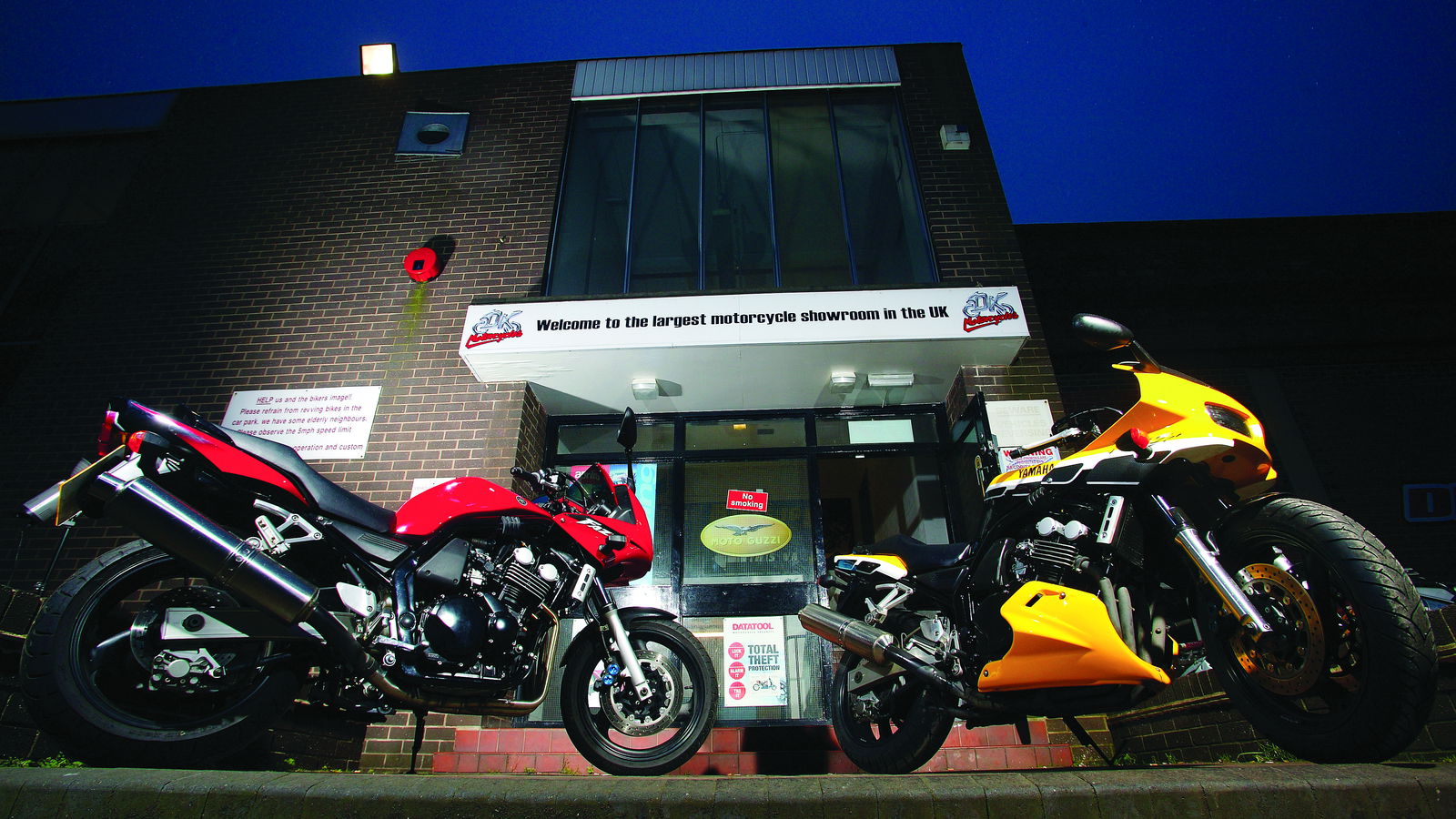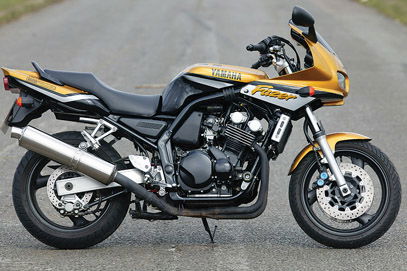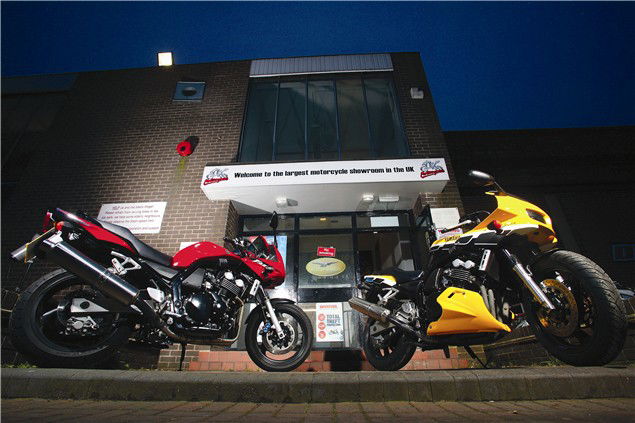Used Review: Yamaha Fazer 600
Cheaper than chips and more versatile than a Swiss Army knife, the Yamaha Fazer is one of the few bikes that really can be (nearly) all things to all men - and all for under two grand

 |
Even medieval alchemists couldn't have managed what Yamaha did with the Fazer 600 back in 1998. They took the motor from a second-rate 600, bolted-on R1 brakes and stuck it all in a workmanlike chassis, wrapped in plastics of questionable aesthetic value.
No matter how they went about it, the men from Iwata had turned base metals into gold: the Fazer was a knockout bike. It performed better than it should, proving to be so much greater than the sum of its parts. So good was it, people looked at it as a budget VFR. It was more flexible and versatile than the Hornet and Bandit it was up against, and more of a man's bike than the SV650. Despite having less power than the Hornet, the midrange torque of the more flexible Thundercat motor made it feel like it had more power, while the able chassis, budget suspension and 110-section front, allied to the shortest wheelbase in the class, made it feel more like a frisky, fast-turning sportster rather than the plodding commuter it should have been.
Add in the practicalities of a machine costing twice the price and you can see why Fazers have such a loyal following, and why many mourned when emissions laws killed it off at the end of 2003. What did Yamaha replace it with? The revvier, buzzier R6-engined tart's handbag that is the FZ6. Alas poor Fazer! We knew you well...
PRACTICALITY
Here's where the Fazer wins. It's comfy one- and two-up (although suspension can be marginal for two), it has two bungee hooks, a fuel gauge, low fuel warning light, two trips, a clock and it came with hazard lights at a time when only BMWs did. Throw in side and centrestands and underseat storage for a U-lock and waterproofs and you have a winner
HEADLIGHT
Universally slagged on the pre-2002 model. Only the left light works on dip but there are ways round this. Either fit Phillips' Vision-Plus bulbs or wire in the right-hand light. You can do this by cutting the positive wire to the dip bulb on the left-hand side and wire it across the dip terminal of the right-hand headlamp
FRONT BRAKES
Coming off the YZF-R1 of similiar vintage, the Fazer's anchors are brilliant and can't really be faulted. Some owners use Kevlar pads, not 'HH', to make the discs last longer
FRONT FORKS
Preload adjustment came in with the 2000-on bikes, but either way the forks are under-damped and under-sprung, meaning the bike dives hard under braking and bottoms out. It's budget, y'see? Maxton re-valve and re-spring the forks to suit rider w eight and bike use for just over £200 plus VAT. A cheaper alternative is to change the fork oil for heavier 15w
ENGINE
The Fazer boasts a surprisingly flexible motor. Derived from the Thundercat's 599cc mill, it uses smaller 34mm Mikuni carbs which, combined with a few other mods, mean the bike offers useable torque and a perfectly-carburated rush to the 12,500rpm redline. It even feels pokier than the revvier Hornet. Some owners report clutches going at 20,000 miles and camchains 5-10,000 miles later. One of the few bug-bears is a vibration at anything between 6-8000 revs. They all do that, Sir. Service intervals are every 4000 miles
GEARBOX
Most owners report a clunky change between first and second, and some jumping out of second with the engine under stress (or wheelying). A few owners report second gear failing at the 50K mark. Gearing is quite low, and many owners fit either a 16-tooth front sprocket, a 47-tooth rear or both
TYRES
Bridgestones are favourite. The bike originally sat on BT57s, but people now rate the BT020/010 combo. Avon Azaros are also well thought of, while Michelin Macadams are okay in the dry and last ages, unlike Dunlop's D207s. Ridden steadily, Fazer's can munch through a rear in 7-8000 miles with a front lasting well over 12,000
FINISH
A weak point. The black paint on the downpipes is so thin rust can be a worry. A fender extender helps, or painting the pipes yourself with high-temperature paint or Smooth Hammerite. Failing that, get them chromed (£70-£100) or replace them with aftermarket stainless pipes.
Paint on the engine is another problem. This can fall off the engine cases and around the fake cooling fins. Resprays won't work as the paint needs to be baked on, so many owners are a little irate, with some managing to get work re-done under warranty
REAR SHOCKS
Budget, with only preload adjustment. If it's buggered or feels too soft, buy a replacement. Hagon, K-Tech and many others offer an alternative with varying amounts of adjustment for varying amounts of money
FUEL CONSUMPTION
40 to 50mpg is the norm. The tank went from 19 litres to 20 in 2000, so you can easily see 160 miles before the reserve light comes on
Yamaha FZS600 Fazer (1998-2000)
Price new: £4959
Pay now: £1800-£2600
Colours: red, black, metallic burgundy, metallic yellow, metallic blue, silver
The original. Thundercat motor +
R1 brakes + cheap chassis = top budget fun
Yamaha FZS600S (2000-2002)
Price new: £5149
Pay now: £2800-£3200
Colours: black, silver, red/black, yellow/black, metallic yellow/black
The Fazer now came with preload adjusters on the forks and a litre extra space in the tank. And for an extra £150 you could have the Fazer S, which came with a red and black or yellow and black paint scheme.
Yamaha FZS Fazer 600 (2002-2003)
Price new: £5099
Pay now: £3000-£4300
Colours: yellow, red, silver, black, metallic blue
2002 saw the final re-vamp with a Fazer 1000-type fairing, while '03 saw the Fazer killed-off by Euro emission and noise regulations.
Yamaha FZ6 Fazer (2004-2005)
Price new: £5499
Pay now: £3300-£5000
Colours: blue, silver, red
Buzzy, harsh and revvy R6 motor and beefy aluminium frame meets poor seat, underseat exhaust and cheap-looking but effective brakes. Looks nice, but in many respects isn't as good as the old bike as a day-in, day-out commuter.

Even medieval alchemists couldn't have managed what Yamaha did with the Fazer 600 back in 1998.
They took the motor from a second-rate 600, bolted-on R1 brakes and stuck it all in a workmanlike chassis, wrapped in plastics of questionable aesthetic value.
No matter how they went about it, the men from Iwata had turned base metals into gold: the Fazer was a knockout bike. It performed better than it should, proving to be so much greater than the sum of its parts. So good was it, people looked at it as a budget VFR.
It was more flexible and versatile than the Hornet and Bandit it was up against, and more of a man's bike than the SV650. Despite having less power than the Hornet, the midrange torque of the more flexible Thundercat motor made it feel like it had more power, while the able chassis, budget suspension and 110-section front, allied to the shortest wheelbase in the class, made it feel more like a frisky, fast-turning sportster rather than the plodding commuter it should have been.
Add in the practicalities of a machine costing twice the price and you can see why Fazers have such a loyal following, and why many mourned when emissions laws killed it off at the end of 2003. What did Yamaha replace it with? The revvier, buzzier R6-engined tart's handbag that is the FZ6. Alas poor Fazer! We knew you well...

